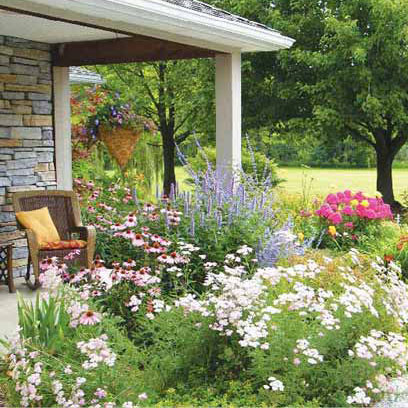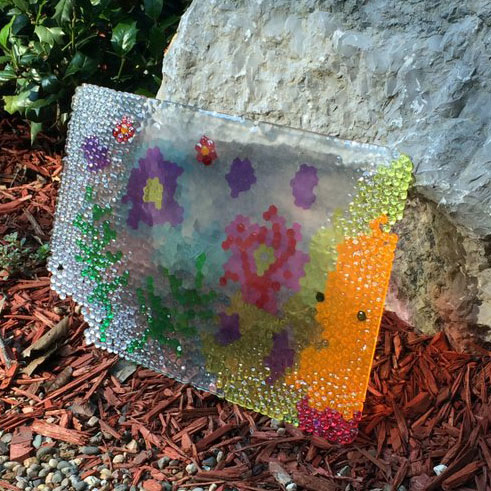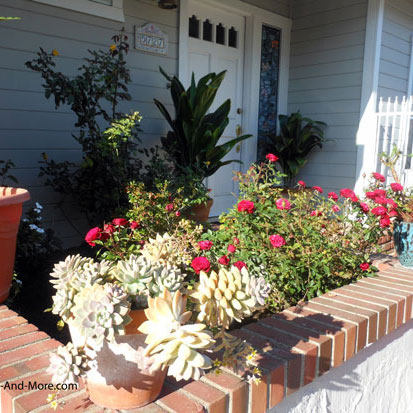|
As an Amazon Associate we earn from qualifying purchases. If you make a purchase through affiliate links on our site, we earn a commission at no cost to you. See our disclosure policy. Container GardeningPerfect for Your Front Porch, Deck, Balcony or PatioPerfect Time for Gardening at Home
Especially during times of social distancing, gardening at home is a good ideaContainer gardening, although a joy to do any time, is especially appropriate during this corona virus (COVID 19) outbreak and for the months to follow. Stay at home orders, social distancing, and sometimes limiting supplies definitely limit our access to fresh vegetables which are essential to our overall health and well-being.The meaning of gardening takes on new wonderful benefits. The corona virus (COVID 19) forces us to adapt, improvise, and overcome. Many things are changing as a result of the virus as necessity is the mother of invention. Growing some of your own food not only provides sustenance, but also gives you a sense of control in this unsettling time. No matter where you live, container gardening makes it easy to grow and maintain a valuable food source. You can grow many different vegetables right on your porch, balcony, deck or even in your home or apartment whether you own or rent. An added benefit is teaching your children the science of growing food and to occupy their time in meaningful ways. Mary and I hope the following information will help motivate and encourage you to try container gardening. Try adding container gardening as part of your porch and yard landscaping projects. It is a great for both large and small spaces (any size porch works!) and works easily for homeowners or renters. 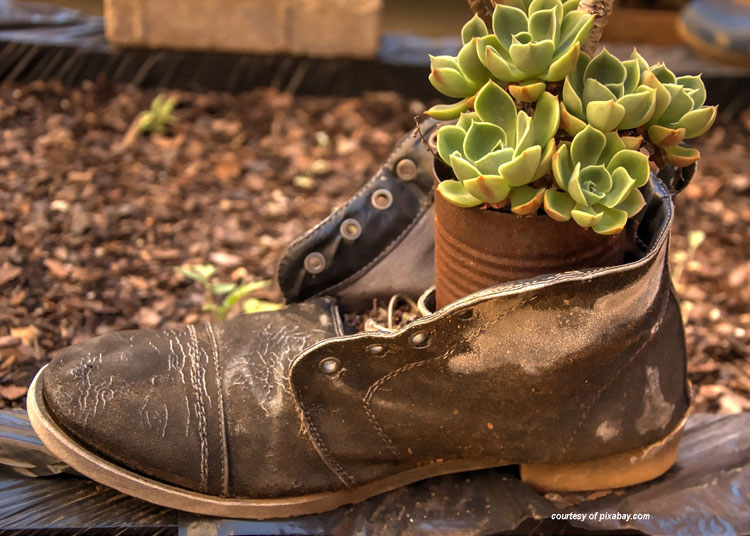
Container gardening lets you eat what you grow, highlight particular plants, or add plenty of curb appeal. It is also a great kids project as well. You can turn your porch and the surrounding area into something really special. Container Gardening PointersIdeal Containers for Porches, Decks, Balconies and Patios
Wouldn't you love to grow veggies like these at home?We found some ideal porch gardening containers that will work well on any porch, deck, or patio. Grow a garden of fresh vegetables, herbs, flowers, and even fruits. And, you don't need a lot of space.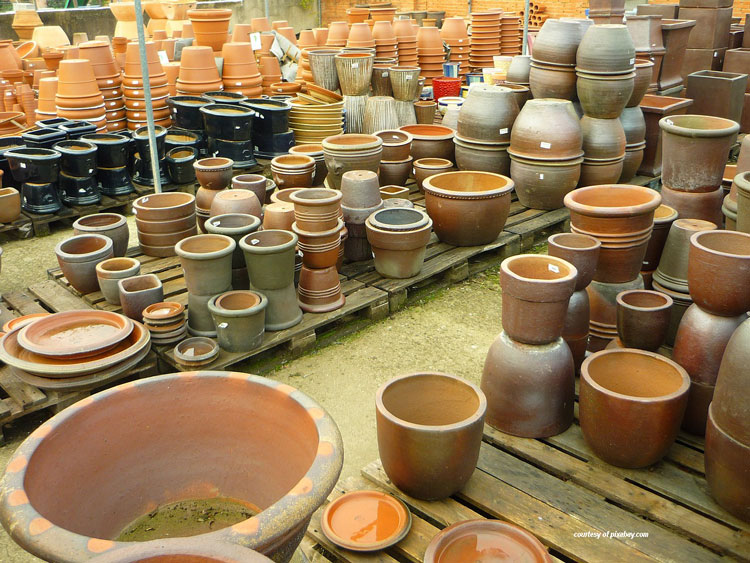
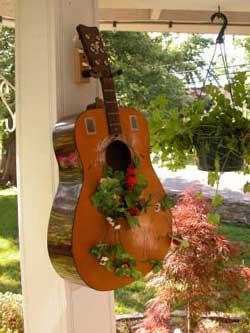 This is easy; almost anything goes.
Use clay or terra cotta, plastic, ceramic pots, planter boxes, wire or wood baskets, cement blocks, an old wagon or perhaps an old boot.
This is easy; almost anything goes.
Use clay or terra cotta, plastic, ceramic pots, planter boxes, wire or wood baskets, cement blocks, an old wagon or perhaps an old boot.
The only thing you don't want to do is use a container that has been treated or has held toxic materials especially if you are going to eat the fruits of your labor. 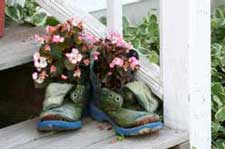 Be creative.
Be creative.
Self-Watering ContainersWe've found that self-watering containers work really well and can be cost effective as you are more unlikely to lose your plants. Self-watering garden containers come in a variety of styles to suit almost any requirement.Now you can leave your home without losing the investment you've made in your plants. This self-watering module planter is built to handle fruits, vegetables, herbs, and flowers. You can add as many as you need. We found many different types of self-watering containers at Amazon.com (referral link). Perfect Porch Planters
Don't overlook growing a few strawberriesGardening on your porch has never been easier. Container gardening allows you to grow lots of food (and other foliage as well) even in the smallest of spaces.Don't have a lot floor space? Then grow vertically. Or, use hanging planters from your porch railings or compact tiered planters in a corner. Porch planters come in a variety of styles, colors, and materials; one of which is sure to create lots of porch appeal. From typical clay, plastic or ceramic pots to everything out of the ordinary, you can easily grow lots of different types of vegetables, fruits, and herbs. 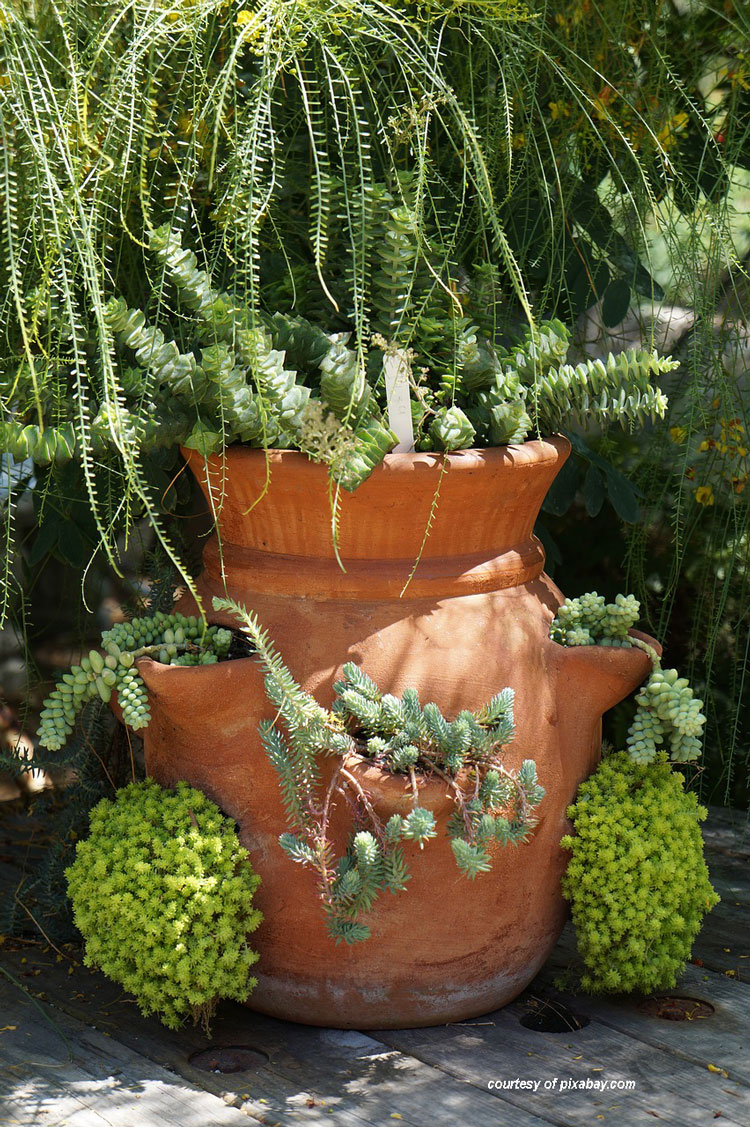
Porch planter filled with succulents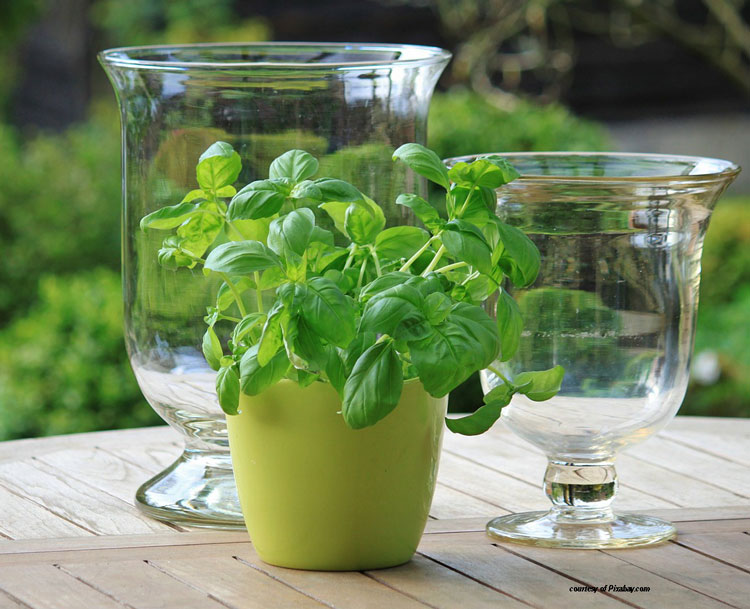
See more porch planter options on Amazon) (referral link).
Look at these options
Container Gardening ResourceWe recommend you check out this book on container gardening (referral link) by best selling author Ed Smith. Whether you are an experienced gardener or just want to try to see if you have a green thumb, this book may be for you.Vertical GardeningAnother great option for porches and other areas are vertical gardens, especially if you don't have room for other types of planters. Use them to grow flowers for color or vegetables for the table.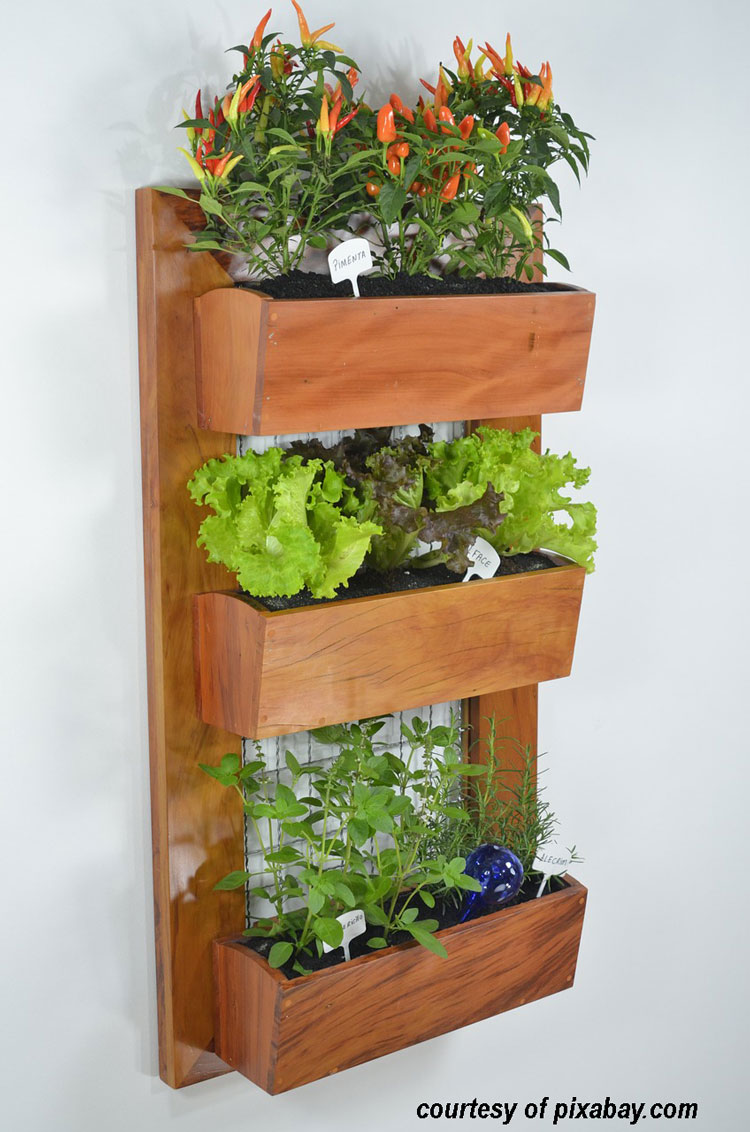
Perfect for small and large spaces alike!We found self-watering vertical planter ideas at Amazon.com (referral link) that's perfect for container gardening.Allow for Proper DrainageProper drainage is important for two reasons: First, plants do not grow well in water-logged soil and second, roots need air.Too much water and the plant can not get enough oxygen for growth. Make sure your container has drainage holes and if not drill several in the bottom. Also make sure that the holes do not become plugged; otherwise, you defeat the purpose of the drainage holes. We like to place small to medium size stones in the bottom so water can flow out the drainage holes. Porous containers lose water quickly and allow for excellent air movement whereas non-porous containers hold water making drainage holes that much more important. Use an insert if you have a decorative container without holes. Although I still prefer to drill holes in the bottom with a special drill bit made for ceramics.
Here is what I love about container gardening.
It is really inexpensive.
You can find containers either around the house, at thrift stores, or neighborhood garage sales. Grow your healthy herbs and plants from seeds. Consider Longevity, Geography and CostBefore selecting your container consider the following:
Obtain Proper Soil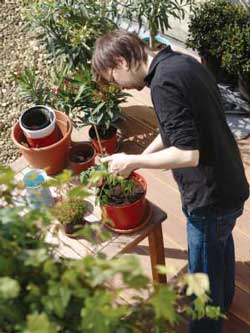 Different vegetables require different types of soil.
Doing a little research before you plant will help ensure you maximize your plant's food production.
Different vegetables require different types of soil.
Doing a little research before you plant will help ensure you maximize your plant's food production.
Potting soil contains various percentages of sphagnum peat moss, vermiculite, perlite, pasteurized soil, and composted manure. Do not use native soil as it will contain clay which will compact the roots in a container. Try not to reuse the potting soil from the season before as it may contain diseases. Another option is to use soil-less mixes which are two to three times lighter. We are told you can add about 10 percent of coarse sand to add weight for heavy plants. Take Care of Your Plant's Water Needs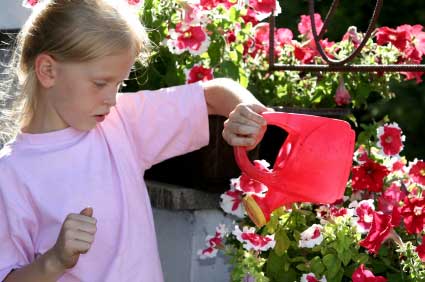
Container gardens need more water than other planting situations. The exposed sides of the container wick away more moisture. Plastic and ceramic do not dry out as fast; however, they will still need additional water. Do not allow the containers to become dry as the finer roots will die. One option is to use water-holding polymers or gels mixed with the potting soil. They help to hold water longer and may extend the time between watering. Self-watering pot systems and devices (discussed above) ensure the plant receives adequate water. If you live near the mountains water may contain higher levels of salt or carbonates which can cause issues. Excessive salt is damaging to plants and causes burned leaf edges, stunted growth, and fewer blooms. Choose the Right FertilizersPlants in containers grow quickly and deplete the available fertilizers. To combat this, mix controlled-release fertilizer granules into the soil mixture when you plant.Again, research the specific type of fertilizer required for your specific plants. Get Adequate LightDon't select plants until you know the specific location you will place them and how much light they will receive. Don't mix plants with different light requirements either.Most nurseries will be able to tell you how much light a plant needs. Seed packets usually have the light requirements listed on the package. The portability of containers allows you to move them to more desirable locations to take advantage of light conditions. Take reflected light into consideration. Light coming off your house or the sidewalk may be damaging to the plants. For planning purposes flowering plants, water plants, and vegetables require at least six to eight hours of sunlight each day to grow well. Root vegetables can do well with six hours; leafy plants and herbs should get at least four hours. Some foliage plants need filtered light or shade. Plants for Container Gardening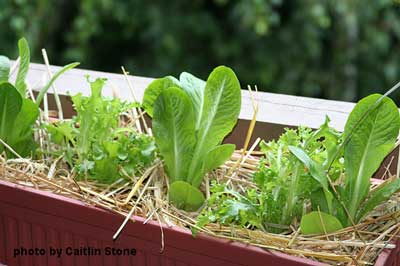
Photo courtesy of Cat StoneCat writes: "For those of us without a huge garden space (like me and my sweetie), we have to get more creative. This is a lettuce box, mounted onto the banister on the porch at our apartment.Notice the hay sticking out everywhere? Hay is much-neglected in gardening, despite that it keeps the soil moist, keeps weeds from sprouting, produces nice oat grass (that kitties love!) and acts as an insulating blanket to the plants." Container MaintenanceDeadhead blooms and harvest herbs and vegetables regularly to prolong the life of the plants in your container garden. Stake or cage vegetables like tomatoes and sunflowers.Vines may need extra support. At the end of the growing season, remove all plants and roots and compost. Scrub the containers with a 10 percent solution of chlorine bleach to kill any organisms that remain. (10% bleach, 90% water)

Hi! We're Mary and Dave, lifelong DIYers, high school sweethearts, and we both love porches. You've come to the right place for thousands of porch ideas. Our Sponsors


End Sponsors Helpful LinksEnjoy shopping Amazon (affiliate link)Popular PagesWhat's NewJoin Our Newsletter Family Porch Designs Porch Ideas for Mobile Homes Build a Porch | Small Porches Porch Columns | Porch Railings Screened Porches Porch Curtains | Porch Enclosures Porch Landscaping | Vinyl Lattice Porch Decorating | Porch Ideas Shop Navigation AidsHome | Top of PageSite Search | Site Map Contact Us PoliciesDisclosure Policy | Privacy PolicyLegal Info Please Join Us Here Also
Find a Trusted Local Pro Copyright© 2008-2025 Front-Porch-Ideas-and-More.com All rights reserved. No content or photos may be reused or reproduced in any way without our express written permission. At no extra cost to you, we earn a commission by referring you to some products on merchant sites. See our disclosure policy. We, Front Porch Ideas and More, confirm, as stated on our privacy policy, that we do not sell personal information. All content here is solely for presenting ideas. We recommend consulting with a licensed, experienced contractor before you begin your project. We make no guarantees of accuracy or completeness of information on our site or any links to other websites contained here. Thank you for taking your time to stop by. See what's popular and new here. |

Hi! We're Mary and Dave, lifelong DIYers, high school sweethearts, and we both love porches. You've come to the right place for thousands of porch ideas. --- My New Molly Jo Book ---
Gentle mystery for kids 8-12. Adults like it too. My book helps kids slow down, notice, and appreciate everyday surprises in nature. It's for sale in right here! --- Our Wonderful Sponsors ---


--- End Sponsors ---Our Newsletter, Front Porch AppealLearn more!Thank you for being here! |
|||||
|
At no extra cost to you, we earn a commission by referring you to some products on merchant sites. See our disclosure policy.
We, Front Porch Ideas and More, confirm, as stated on our privacy policy, that we do not sell personal information. All content here is solely for presenting ideas. We recommend consulting with a licensed, experienced contractor before you begin your project. We make no guarantees of accuracy or completeness of information on our site or any links to other websites contained here. Front Porch Home | Return to Top Contact Us | About Us | Advertise with Us | Search | Site Map Media | Privacy Policy | Disclosure | Legal Notice | What's New |
||||||
|
No content or photos may be reproduced or copied in any way without our express written permission. | ||||||
